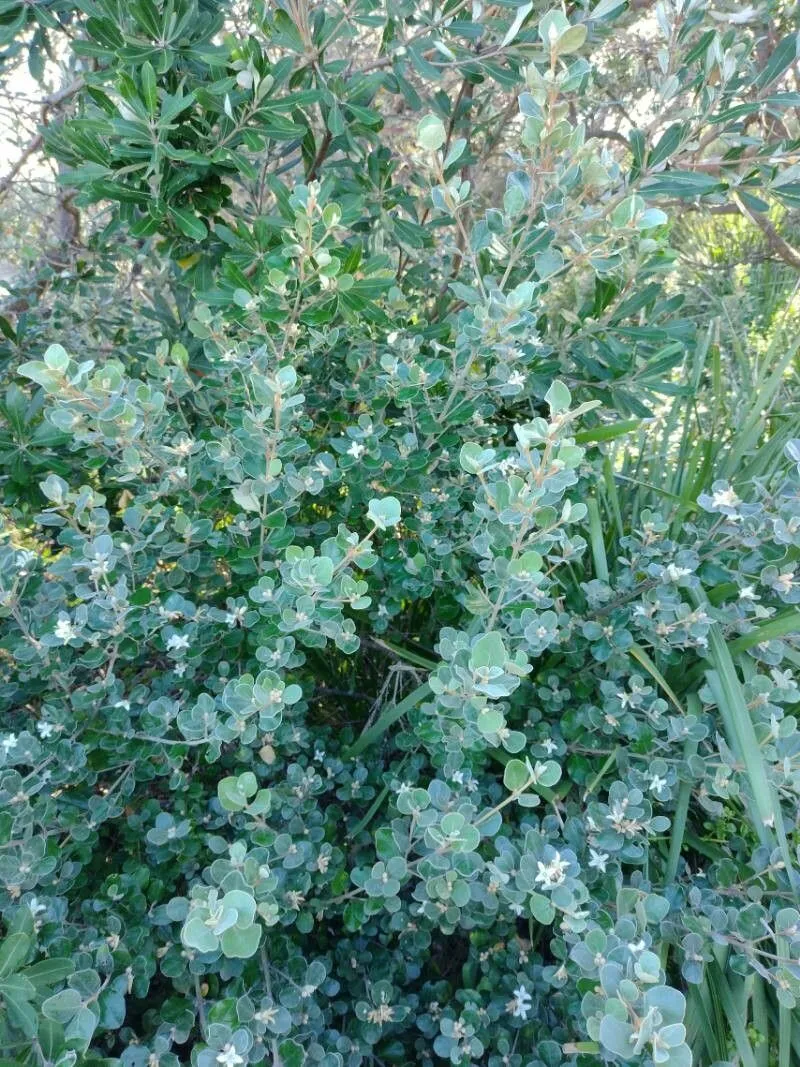
Author: Andrews
Bibliography: Bot. Repos. 1: t. 18 (1798)
Year: 1798
Status: accepted
Rank: species
Genus: Correa
Vegetable: False
Observations: SE. Australia
White correa, scientifically known as Correa alba, is a charming evergreen shrub that has been documented since its inclusion in the botanical literature in 1798 by Andrews in “Bot. Repos. 1: t. 18”. Belonging to the Rutaceae family, this notable plant is native to the southeastern regions of Australia, where it significantly contributes to the diverse flora of the area.
Characteristically, the White correa exhibits a compact growth habit, typically reaching heights and widths of up to 1.5 meters. Its dense, bushy form is complemented by the small, rounded leaves that possess a soft, velvety texture, adding to the plant’s ornamental appeal. These leaves are pale green to grey-green, offering a subtle yet effective backdrop for the plant’s standout feature – its flowers.
The flowers of Correa alba are particularly distinctive. They appear in profusion, generally from late autumn through to early spring, though sporadic blooms may be observed at other times of the year. Each flower is a pristine white, often with a hint of pink or green, and shaped like a delicate, tubular star. This charming display not only beautifies gardens but also attracts various pollinators, including bees, thereby supporting local ecosystems.
Beyond its visual appeal, the White correa is highly valued for its adaptability and resilience. It thrives in a range of soil types, from sandy to loamy, and can endure both coastal conditions and light frosts. This makes it a versatile choice for gardeners looking to incorporate native plants into both contemporary and traditional landscapes.
Being drought-tolerant once established, Correa alba is an excellent candidate for low-maintenance gardens. It performs well when used as a ground cover, informal hedge, or even as a feature plant in rockeries and coastal plantings. Regular pruning helps to maintain its shape and encourages denser foliage, while minimal irrigation needs make it an eco-friendly option for sustainable gardening practices.
In summary, White correa (Correa alba) is a timeless native Australian shrub that combines beauty, functionality, and robustness. Its historical significance, ease of cultivation, and ecological benefits make it a treasured plant within both horticulture and native plant conservation circles.
Eng: botany bay teatree, white correa
Deu: weiße correa
En: White correa, Botany Bay teatree
De: Weiße Correa
Hi: कॉरिया अल्बा
Fa: کوریا آلبا
Taken Dec 13, 2021 by Matt Walkerden (cc-by-sa)
Taken Dec 13, 2021 by Matt Walkerden (cc-by-sa)
Taken Jan 30, 2022 by Nickisht (cc-by-sa)
Taken Jun 21, 2022 by Dave Ketteringham (cc-by-sa)
Taken Apr 24, 2022 by Boris Therock (cc-by-sa)
Taken May 31, 2021 by Ball Darren (cc-by-sa)
Taken May 23, 2020 by DustyRose (cc-by-sa)
Taken Feb 7, 2021 by Jay Jackson (cc-by-sa)
Taken Apr 24, 2022 by Boris Therock (cc-by-sa)
Taken Apr 24, 2022 by Boris Therock (cc-by-sa)
Taken Sep 24, 2022 by Tristan Jaton-Maria (cc-by-sa)
Taken Nov 5, 2022 by Martin Bishop (cc-by-sa)
Taken Apr 18, 2020 by Georg Dean (cc-by-sa)
Taken Jun 7, 2022 by ian connop (cc-by-sa)
Taken Apr 24, 2022 by Boris Therock (cc-by-sa)
Family: Myrtaceae Author: (F.Muell.) K.D.Hill & L.A.S.Johnson Bibliography: Telopea 6: 402 (1995) Year: 1995 Status:…
Family: Rubiaceae Author: Pierre ex A.Froehner Bibliography: Notizbl. Bot. Gart. Berlin-Dahlem 1: 237 (1897) Year:…
Family: Sapindaceae Author: Koidz. Bibliography: J. Coll. Sci. Imp. Univ. Tokyo 32(1): 38 (1911) Year:…
Family: Asteraceae Author: A.Gray Bibliography: Pacif. Railr. Rep.: 107 (1857) Year: 1857 Status: accepted Rank:…
Family: Fabaceae Author: Medik. Bibliography: Vorles. Churpfälz. Phys.-Ökon. Ges. 2: 398 (1787) Year: 1787 Status:…
Family: Aspleniaceae Author: (Cav.) Alston Bibliography: Bull. Misc. Inform. Kew 1932: 309 (1932) Year: 1932…